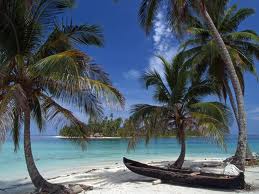
(International Living) You want to leave it all behind for that one idyllic Caribbean island—a place surrounded by vibrant seascapes and white sand…your very own hard-to-reach haven. But why settle for one when you can have 378?
That’s a Caribbean island paradise for every single day of the year…and a few left over for friends. That’s how many islands sit in the San Blas chain, strung out along the Caribbean coast of Panama. At least, that’s how many authorities estimate exist. No one is exactly sure of the precise number. It adds to the exotic, undiscovered nature of these sandy jewels.
Only 36 are inhabited. The friendly natives are the independent Kuna tribe who for the most part have clung to their own traditions, economic system, language and way of life. The islands are now part of the autonomous province of Kunayala, run with minimal interference from the national government.
You can take a 20-minute flight from Panama City to the capital and main island, El Porvenir, but we traveled the more adventurous (and cheaper) route—a two-hour drive and a short trip on a small fishing boat.
We were headed for Carti, one of the main islands where local indigenous families welcome tourists and allow guests to live among the community. The traditional dress and unassuming nature of the Kuna make you feel as though you’re the first to set foot in this exotic paradise.
The next morning, we set off for one of the outlying deserted islands—Coco Blanco. The name is certainly apt. Giant coconut trees create an exotic forest in the interior, and the shores are dusted with fine, white sand.
We dropped our bags and waded into the warm water for some snorkeling. Sergeant fish, grouper and snapper glided by as their brothers were roasted on the fire for our lunch. Beautiful stones and bright fire coral covered the sea bed. Farther out, baby lobsters scuttled behind the rocks. A local fishing boat was bobbling not too far away and near it, the dark heads of Kuna fishermen could be seen emerging from the water—head down, goggles on, spear in hand, waiting for dinner to swim by.
We were ravenous by the time food was served, and, sitting on the sand at a long, hewn plank of wood that serves as a table, we tucked into a deliciously simple lunch of fried fish, rice and juicy tomatoes. Sitting in the sun we chatted to some of the colorfully-dressed Kuna women. They weave their own dresses and the resulting patterns are vital and rich. Their ankles and necks were wrapped in strings of bright beading.
As evening started to creep up into the horizon our boat drifted back to Carti. We passed islands that looked brand new, and islands that looked long forgotten.
When it was dark and the night sky was a breathtaking canvas of constellations, we walked to a clearing in the middle of the island. This seemed to serve as a communal dining area. More fish was cooked over a fire, more rice piled onto plastic plates. We ate quietly, as Kuna women worked in the smoky huts and the men sipped beer, looking out to sea